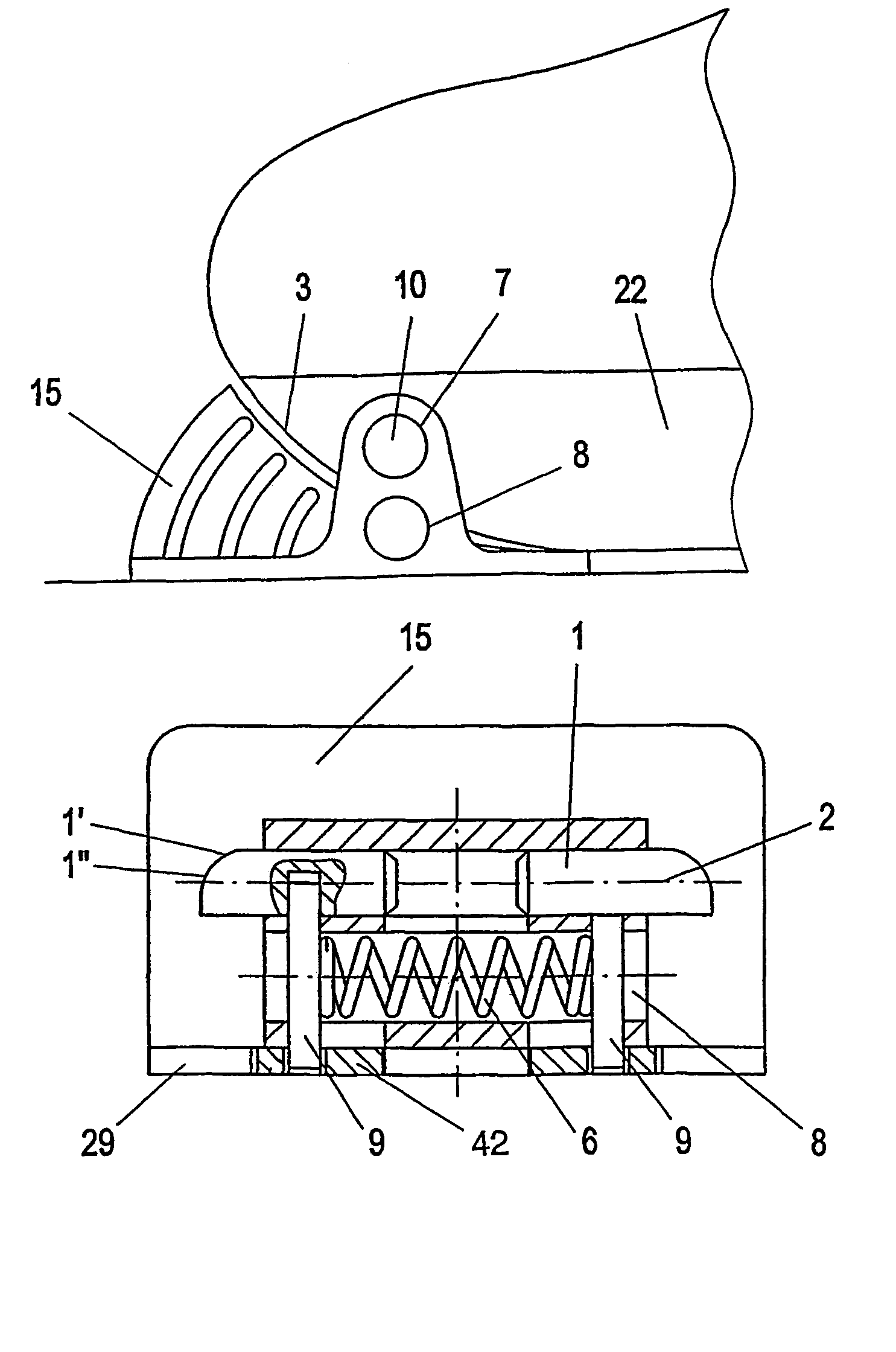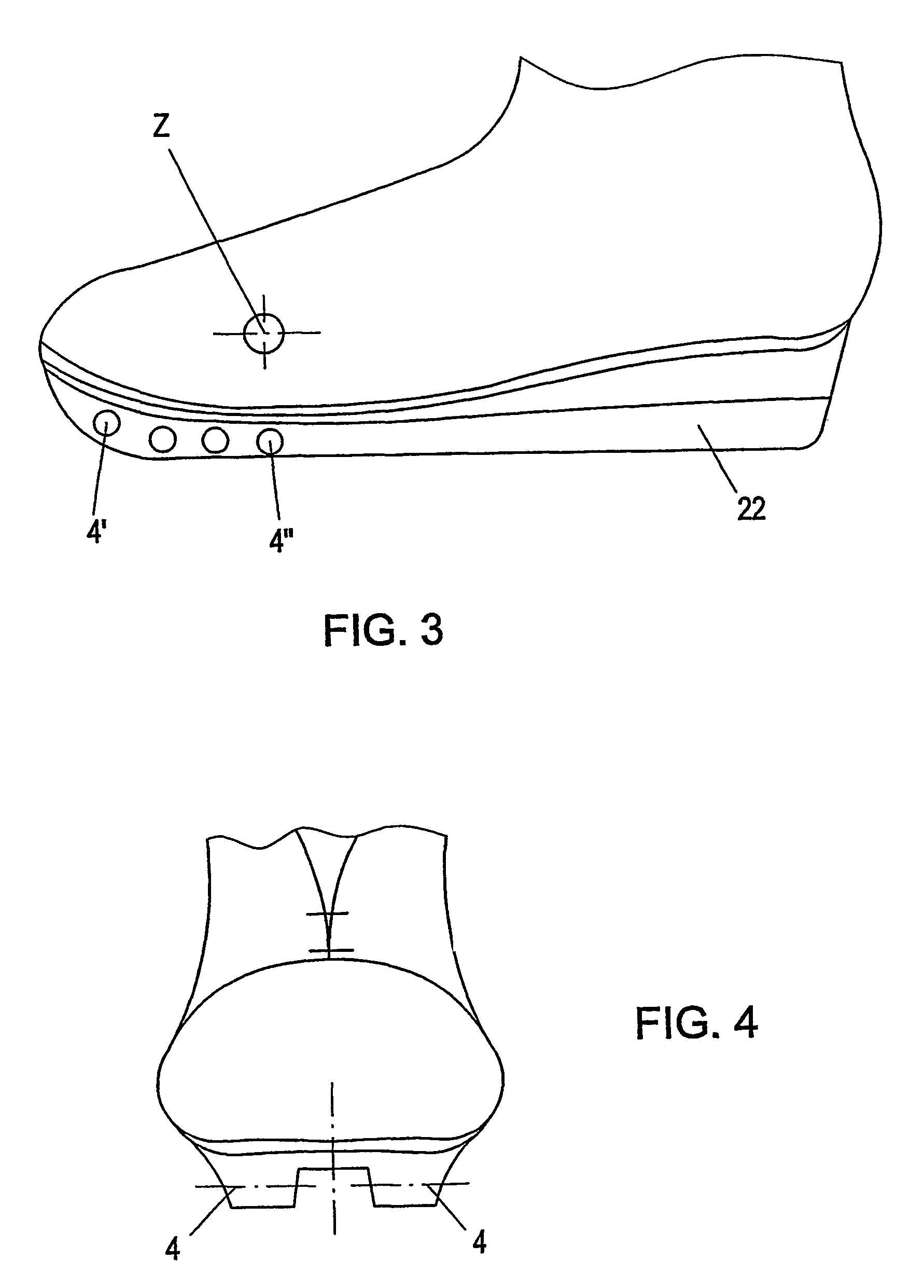Device for connecting a sports boot with a sliding means
a technology for connecting devices and sports boots, which is applied in the direction of ski bindings, sports equipment, skiing, etc., can solve the problems of requiring the use of more strength, and affecting the performance of the system
- Summary
- Abstract
- Description
- Claims
- Application Information
AI Technical Summary
Benefits of technology
Problems solved by technology
Method used
Image
Examples
Embodiment Construction
[0030]In FIGS. 1 and 2, a pressure-spring loaded latching bolt of a step-in mechanism is denoted by 1, which is positioned approximately 1.5 cm behind the boot tip at the side of the binding.
[0031]One latching bolt 1 each is mounted in an end region each of a latching bolt bore 7, extending transversely to the running direction, of the binding 20 according to the invention, which binding is inserted in a U-shaped section 11 that is embedded in a corresponding recess 21 of the boot sole 22. The latching bolts 1 are provided with a rounding at their ends facing away from each other, which rounding is located above that plane which extends through the longitudinal axis of the bolt and, in the snapped-in state, parallel to the ski upper side. In this manner, stepping in from the top is ensured, and a clearance-free movement is possible, yet an uncontrolled opening of the binding is prevented.
[0032]The entry mechanism, which is designed as a step-in mechanism, is realized by pressure-spr...
PUM
 Login to View More
Login to View More Abstract
Description
Claims
Application Information
 Login to View More
Login to View More - R&D
- Intellectual Property
- Life Sciences
- Materials
- Tech Scout
- Unparalleled Data Quality
- Higher Quality Content
- 60% Fewer Hallucinations
Browse by: Latest US Patents, China's latest patents, Technical Efficacy Thesaurus, Application Domain, Technology Topic, Popular Technical Reports.
© 2025 PatSnap. All rights reserved.Legal|Privacy policy|Modern Slavery Act Transparency Statement|Sitemap|About US| Contact US: help@patsnap.com



